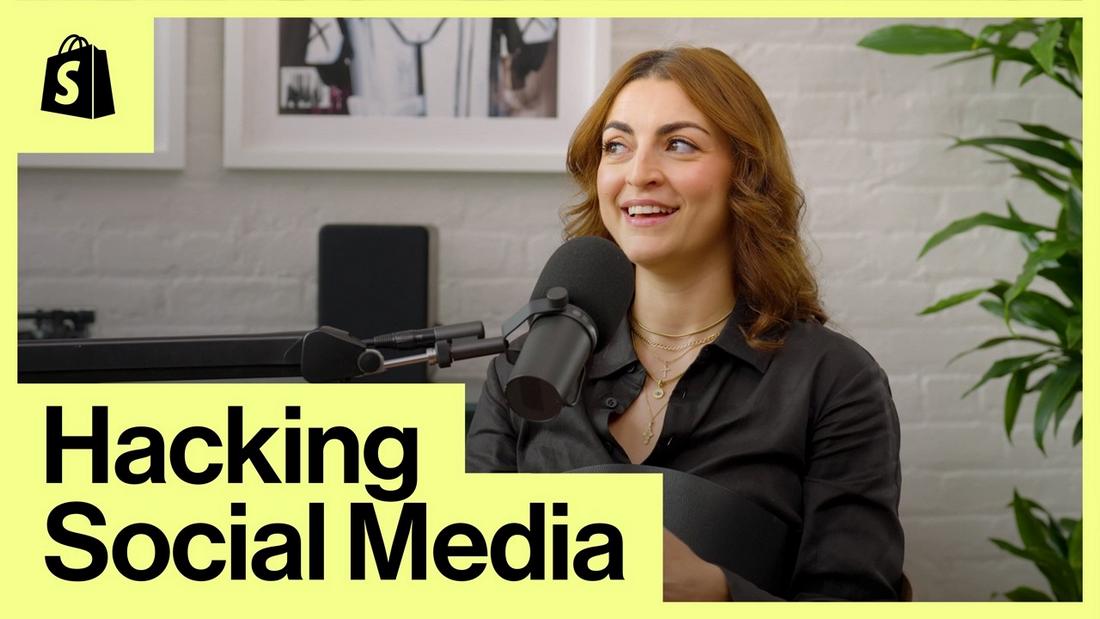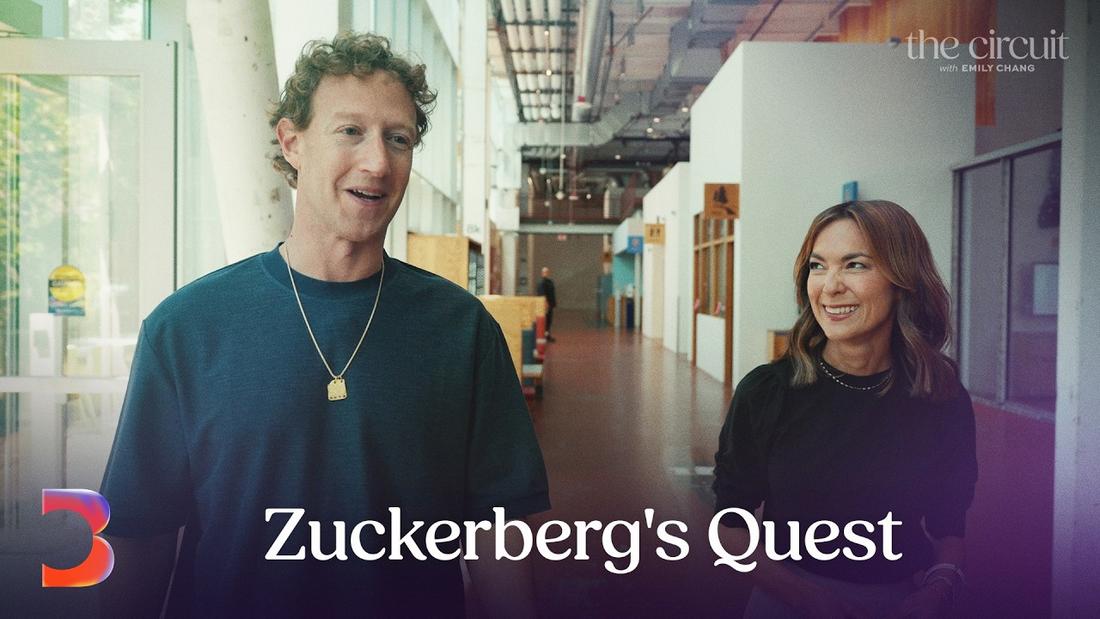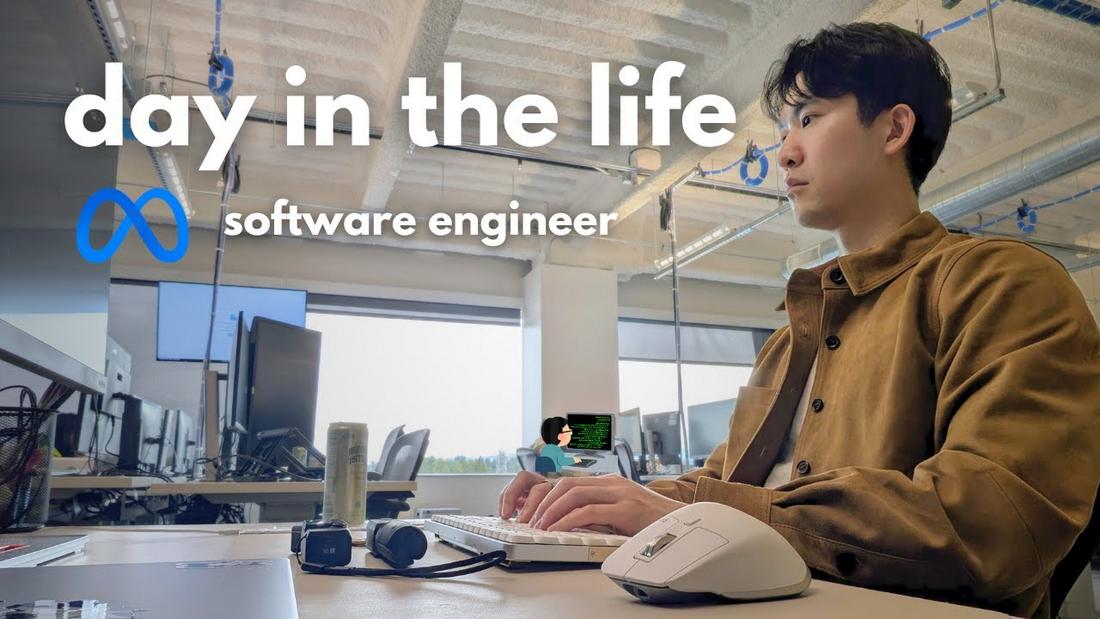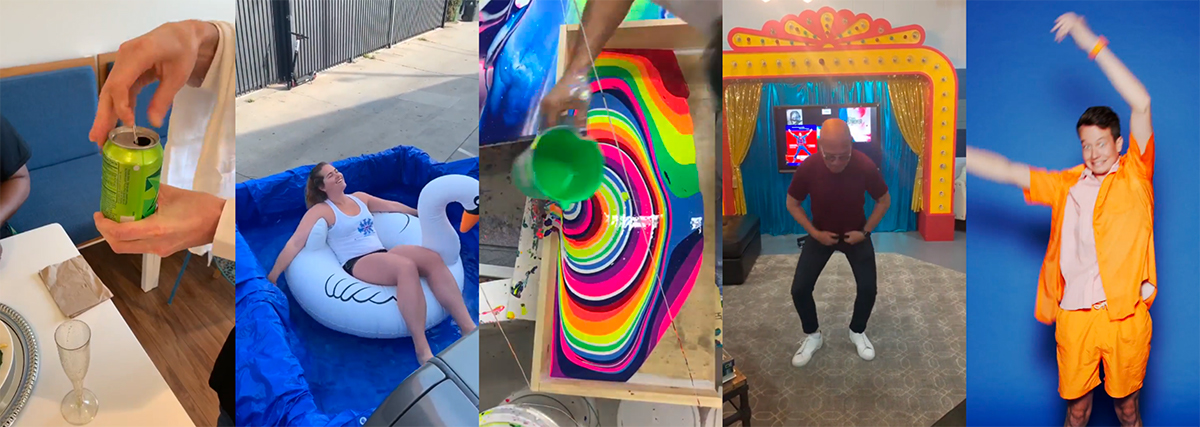30+ Video Marketing Trends for 2025
Almost every marketing prediction, resource, or how-to guide includes the same advice: video needs to be part of your strategy. But what type of video marketing is most important right now?
From super-short (micro) video clips, to live video on social media, to full-production ads and stories, we’re going to look at some of the top video marketing trends for the year and how you can incorporate them into your design and marketing plans.
And here’s why it matters, U.S. adults spent 149 minutes per day watching digital video in 2021 and that number is only expected to rise.
Let’s dive in, and embrace video as the new marketing channel you need to get right!
1. AI-Assisted Videos
The entire marketing industry was revolutionized within a few months with the rise of AI-powered tools. A video production that took days or weeks to complete now only takes a few hours. A video that required a thousand-dollar budget now only requires a subscription to a couple of AI tools.
The entire process of creating videos can now be done with the help of AI. From creating the script with ChatGPT to generating voiceovers, stock videos, music, images, and even editing can be done with AI.

Some aspects of this process are not perfect. For example, generating stock videos still needs a little bit of improvement. But you won’t have to wait too long. Even Adobe is working on its next-gen generative AI that supports creating entire videos with text prompts, which will be available this year.
With the help of AI tools, every marketer will be capable of taking on bigger projects and be more efficient than ever before. It will surely have a big impact on the video marketing industry in 2025.
2. Branded Video Podcasts
Podcasts have been growing in popularity over the years very slowly and today they are one of the most effective mediums of marketing and promotions. As a result, they soon transitioned from audio-only medium to video format, especially with Spotify and YouTube introducing support for video podcasts.
Brands are now taking advantage of this new video marketing format by producing their own branded video podcasts. Wix, Shopify, and Microsoft Xbox are among the many brands that now have active podcasts to talk about their products, services, and success stories.
These long-form video podcasts are more than just about promotions. They are also about sharing deep and meaningful conversations with the people in charge of the company and giving the audience insights into what goes behind the scenes in an entertaining way.
3. Podcast Clips
A side benefit of producing a video podcast is how you can repurpose it to create content for other platforms like TikTok, Instagram, and YouTube. Some of the most popular and successful types of content on these platforms have been short clips taken from podcast interviews as they make people stop and listen to tips and advice from influential people.
If you look closer, you’ll notice that every podcast channel now has a separate clips channel where they share short-form clips from their podcast episodes in the form of TikToks, Instagram stories, or YouTube shorts. This offers a simple, low-effort way to reach audiences on different platforms while also boosting engagement.
4. Event Livestreams
For a long time, annual conferences, product reveals, and special events from big companies were limited to the press. If we wanted to know what the new iPhone looked like or what kind of new features we could expect to see in the new Photoshop update, we had to wait until a press outlet published a story about it. But not anymore.
Event live streams were popularized by Apple a few years ago. Their over-the-stop and engaging style of live-streaming events were watched by millions of people around the world. Many other companies followed this strategy to livestream their own events online for everyone to see.
Now, even small startups and brands host special events to announce their latest products and updates. This has proven to be an effective approach to reach a wider audience across different platforms.
5. Personal Interviews and Tours
Exclusive office tours and behind-the-scenes videos are nothing new. Many big corporations have been doing it for years. Recently we saw a new trend in this marketing strategy where key employees and CEOs give more meaningful interviews and tours of their personal lives.
Mark Zuckerberg gave a very personal interview where he not only shared insights into his day-to-day life and his newfound hobbies but also detailed his plans for future products. IBM also offered influencers a tour of its innovative quantum computer. Elon Musk continued to provide tours of SpaceX to content creators. And it looks like more brands and companies are starting to follow this trend, now more than ever.
6. Daily Life Vlogs
Encouraging employees to share their daily life around the office environment is another effective video marketing strategy that promotes brands in a subtly indirect but more meaningful way.
Typing “day in my life” into the search bar on any video-based social media platform will show you thousands of videos created by employees of various types of companies. While most of these videos aren’t produced by brands, giving employees the freedom to create these videos helps promote brands and their work culture to the world.
This style of indirect marketing videos is much more effective at connecting with an audience than even Superbowl ads. As they help build trust, loyalty, and confidence on a personal level.
7. Edgy Brand Videos
Videos revealing the deepest secrets of brands and their marketing strategies are one of the most refreshingly unique video marketing trends we’ve been seeing over the past few months.
Popularized by independent and smaller startups, like Nothing, these edgy videos skip the traditional formats of “official” and “professional” video content to build trust and connect with audiences in a creative way.
One of the videos made by Nothing, the UK-based smartphone maker, revealed how they tricked the media to reveal their latest product by pretending to leak information. Their YouTube channel has many other videos challenging the practices used by competitors and comparing products as well.
8. Short Film Commercials
.embed-container { position: relative; padding-bottom: 56.25%; height: 0; overflow: hidden; max-width: 100%; margin-bottom:20px; } .embed-container iframe, .embed-container object, .embed-container embed { position: absolute; top: 0; left: 0; width: 100%; height: 100%; }
Many brands have been making adverts disguised as short films. For a long time, these were only made by big corporations and brands such as BMW, Marriot, Coca-Cola, and Porsche. Today, it’s much easier and cheaper to develop such short film commercials.
Brands are now commissioning influencers and content creators to make long-form adverts disguised as short film-style videos. These influencers create interesting, engaging, and entertaining videos that seamlessly integrate products and brands within the story.
Rather than buying ad spots in YouTube videos or blatantly sponsoring TikTok videos, funding a short film-style video makes sense for a brand to promote products in a more natural and seamless way, while also supporting content creators at the same time.
9. Seamless Loop
.embed-container { position: relative; padding-bottom: 56.25%; height: 0; overflow: hidden; max-width: 100%; margin-bottom:20px; } .embed-container iframe, .embed-container object, .embed-container embed { position: absolute; top: 0; left: 0; width: 100%; height: 100%; }
Contrary to popular belief, TikTok and YouTube shorts aren’t always about recreating awkward dances and reacting to funny videos. Content creators are now much smarter and more creative when it comes to making more entertaining videos.
One of the popular trends on these short video platforms is the seamless looping video. These videos are brilliantly designed to make the clip playable endlessly, over and over again. And they are quite mesmerizing to watch.
A few brands have been utilizing this trend to their advantage by making seamless loop videos that have users staring at the screen for a long time. And we will likely see more marketers incorporating this strategy into their video marketing campaigns this year.
10. Behind-the-scenes videos
The behind-the-scenes videos are one of the tried and true methods of marketing and promoting a brand. However, most marketers aren’t taking advantage of this video marketing method.
Giving your audience and customers a behind-the-scenes look at a brand and how it operates is an effective way of building trust, loyalty, and transparency. Many big brands have done this in the past. However, that old approach no longer interests the younger audiences.
Now, you have to be more creative and engaging when creating quick behind-the-scenes videos for platforms like TikTok, YouTube shorts, and Instagram Reels. There’s plenty of opportunity here for marketers to capitalize on.
11. Influencer Explainer Videos
.embed-container { position: relative; padding-bottom: 56.25%; height: 0; overflow: hidden; max-width: 100%; margin-bottom:20px; } .embed-container iframe, .embed-container object, .embed-container embed { position: absolute; top: 0; left: 0; width: 100%; height: 100%; }
We went through a series of trends related to explainer videos in the past, from whiteboard explainers to animation explainers, motion graphics explainers, and more. The latest trend, however, may not surprise you at all.
The newest trend in explainer videos is influencer explainers. These videos involve getting influencers to create more in-depth explainer videos that dive deep into a product and its features.
These are not product reviews or feature overviews. These explainers are more focused and detailed, similar to online courses and tutorials. Influencers such as Thomas Frank does these types of videos quite brilliantly. Some of his videos are an hour long and yet they get millions of views.
It’s an effective video marketing strategy for two reasons: They don’t push a product forcefully, instead, they promote how to use it. The second benefit is these videos are more authentic than paid reviews or adverts.
12. “Shorts”
YouTube Shorts launched in late 2020 and has been steadily growing in popularity. It’s the vertical format, short form answer to video with a style that’s a lot like TikTok or Instagram Reels.
Shorts have more than 5 trillion views. So, it’s pretty obvious that this style is trending.
These videos are only a few seconds and tell a quick story. Much of the content is user generated but it has some value for marketing as well. Common video topics include pranks, silly animals, and how-tos. The latter might be the most useful for video marketing.
13. Trending Audio
Another video marketing trend that’s been fueled by TikTok and Instagram is trending audio clips on videos. These sound clips might include popular songs, voiceovers, or other sound effects that the video tries to match.
These videos can get a lot of play and may also trend with other elements such as hashtags.
For video marketing purposes, trending sound can be a quick way to hop on a trend and generate engagement, but you will have a very limited time window to act and get your video posted before the trend fades again.
14. Sequential Storytelling
YouTube, a Google company, has put a lot of time and effort into what makes great video content. Their research shows that videos with sequential storytelling – something with a beginning, middle, and end – perform better and create more effective ads.
It’s not that surprising when you think about it. With the rise of streaming television and YouTube as an entertainment platform where users watch more and longer-form videos, the narrative format is more important than ever.
This is a trend that works for YouTube and almost anywhere else you plan to use video content. It works for short and long videos as well. The common denominator is that you just have to remember to tell a story that will resonate with audiences.
From YouTube:
“Video ad sequencing updates the traditional model, allowing you to serve up a planned sequence of ads that tell a story to customers across their purchase journey. New technology makes sequencing manageable and offers gains for marketers. It’s proven to be more memorable than the 30-second ad spot.”
So what does this mean? You can tell a single story across multiple videos, picking up where you left off in one and starting again in another. Keep building the video story over time.
15. User-Generated Video
User-generated video has long been popular with social media but it is everywhere you look. Even video that’s not user-generated often has that authentic look to it.
Think about many of the videos you’ve watched recently – from dances on TikTok to commercials – almost every other video looks like something someone did on the fly. There’s less perceived production and more of a look-at-what-I-just-made feel to it.
Even one of the most famous “user-generated” movies is making a comeback with a Blair Witch sequel (Escape Blair Witch) in late 2021.
16. Interactive Video
Interactive video comes in a lot of forms. It could be virtual reality or a game or accompanying elements, links, or options on a website or with a shared post.
One thing is trending though – you have to give users something to do once they’ve watched the video. Continue the engagement. Don’t let it stop with a view. Users who stick with you and watch a video are already engaged with your brand and content and are even more likely to continue that engagement. Keep the connection with an interactive opportunity.
The key to making interactivity work is to ensure that it aligns with the video itself. The link or next action should be intuitive and interesting.
Take note of how Maybelline, above, layers video behind a box that includes a call to action. This simple layering of elements can help keep users engaging with content longer thanks to a video hook. When you think of videos and interactivity, consider ways outside of AR and VR to implement them.
17. TikTok Style
If you have scrolled any social media feed, almost every video is using the fun, fast, energetic style made popular on TikTok. These short videos explain or tell about one thing with crazy dance moves, funny jingles, and stunts or pranks.
This silly and fun style is carrying over into marketing as well. (The Washington Post has a popular TikTok account that “sells” the news in this format.)
The trick to this video style is a marriage of information and entertainment. And it’s harder than it looks. To make the most of it for true marketing purposes, you should plan to storyboard ideas first.
18. Longer-Format Video
Some videos seem to be getting shorter and shorter, but longer format videos are on the rise. People are getting more used to watching full-length videos online, from social media clips and interviews that last several minutes to full episodic videos on YouTube.
The trick to longer-format video is that it has to be good. (Think of getting sucked into those recipe demos on Facebook. They might last 2 minutes but you want to see the finished food.)
Did you know that longer videos can actually result in higher engagement rates? A study by Twentythree.net found that videos longer than 15 minutes account for 50 percent of all video engagement, but only 8 percent of content. Think about that for a minute. You can produce fewer, longer videos and get greater results.
Subaru took its popular “Dog Tested” campaign to YouTube, showing outtakes from the ad campaign. The behind-the-scenes video is one minute long and the channel has more than 318,000 subscribers. (Think about it: These are people that looked for a commercial to watch online.)
19. Educational and Training Content
From FAQs to learning how to use a new product to online learning in a university setting, educational and training content is one of the most in-demand types of video content.
According to a report by Wyzowl, 68% of consumers prefer watching videos to learn about new products or services. That is more than reading articles, infographics, ebooks, and manuals, or seeing presentations combined.
If you are struggling with what type of video content to produce, this is the place to start. Create something that helps users better understand who you are, what you do, or your service or product offerings. And share it!
20. More Live “Stories”
Live “stories” aren’t just for Instagram. They are taking over all kinds of video formats in public and more private spaces, such as web chatting or conferences.
In-the-moment video creates an authentic connection with users that they like.
According to Livestream, 80% of audiences said they would rather watch live video from a brand than read a blog post, and 82% preferred live video to social media posts.
So, if you aren’t going live, it might be time to think about it. Just remember to keep the video succinct and to the point and make sure the video and audio quality is good. The No. 1 reason viewers turn away from live video is poor quality.
And if the video includes timeless content, consider flagging or highlighting it so that it can be replayed later.
21. More Personal Video Interactions
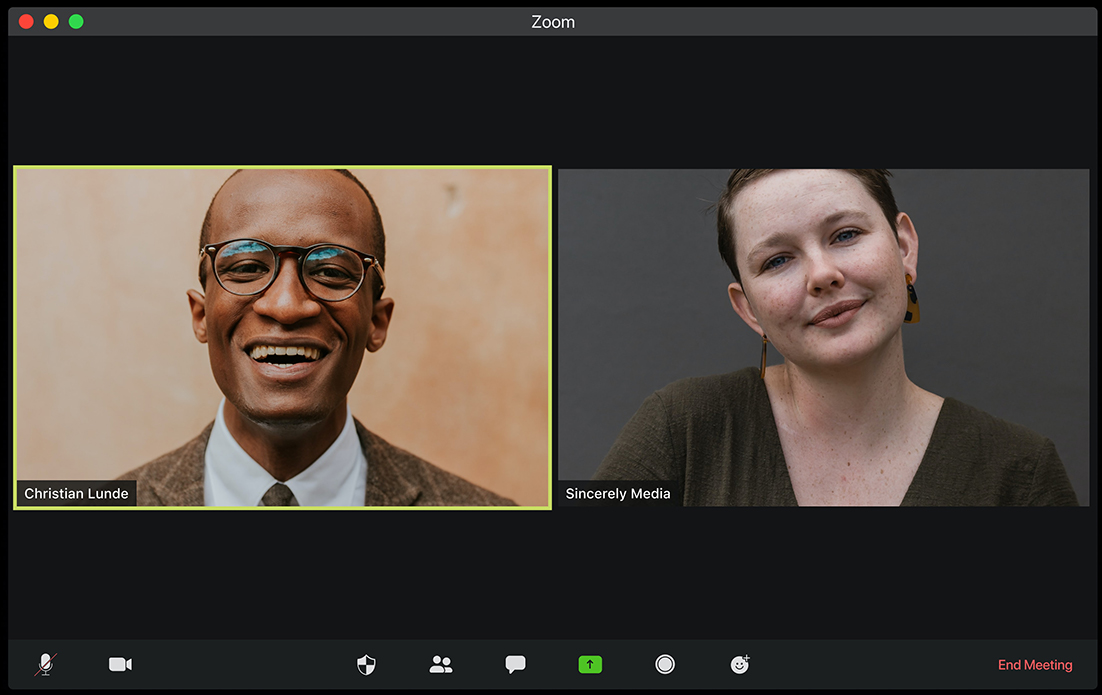
You can thank the pandemic for this video marketing trend, but more people are interacting individually or in groups using live video chat.
Zooming has become a verb that refers to this type of video. And it will spill over to person-to-person marketing. From styles and recorded videos that look like video chats to actually scheduling chats for sales purposes, expect a lot more person-to-person interaction using video.
22. Soundless Optimization
Social media has changed the game when it comes to video marketing. A significant number of users are watching without sound.
There are plenty of reasons for this from not wanting co-workers to hear what’s on the screen next to them, to watching a video in public places on phones, to general annoyance at audio. But you need to create video for those who don’t want to listen.
Captioning and on-screen instructions or information are vital to ensure that video content fully reaches the audience. This can impact the way you record video for marketing and how you edit for playback.
The good news is that optimizing for soundless playback can actually help make video content accessible to more people. We’ve got a guide to accessibility for you here, and it includes some tools for captioning video.
23. Less Production
Highly produced video is out – unless you are making a movie – and quick action, blog-style video is in. The rise in video on social media and YouTube has changed the value of production for viewers.
The other reason for this trending video marketing technique? It’s fast, agile, and adaptable.
Rather than sending a simple tweet, people can engage with each other online using video messaging. Think of how many more video requests you are getting, though direct message feeds (such as LinkedIn) to public channels (Facebook and Instagram).
24. Vlogging vs. Blogging
Vlogging on YouTube (and other video sources) is the new blogging. Video diaries, reviews, and tutorials are a great way to help people find your product or service.
Plus, it is a growing marketing segment.
Vlogging is getting more mainstream all the time with tools such as Instagram TV and the do-it-yourself nature of these videos. You don’t have to have high-end equipment to tell a video story online, just a phone, an inexpensive microphone, editing software (or an app), and YouTube.
25. Vertical Video
Some of you are going to cringe: vertical video is here to stay (for a while anyway).
You can thank Instagram Stories and TV for that. But Facebook and YouTube also support vertical video. And think about how you actually hold your phone – it’s vertically.
Square videos are also gaining some popularity, although not to the same degree.
It’s all about where you plan to post and share. Horizontal video is still best for websites being viewed on wide-screen monitors and video ad formats (although some of those are more square). Vertical video is the thing for social media.
26. Super Short Video Ads
What if your video ad finishes playing before the “skip” option pops up? It kind of ensures that all the content will be seen.
Super short (or micro) video ads are catching on.
The challenge is creating something cool enough to click in 6 to 10 seconds. But short-form video ads can tease users just enough to make them want more. Use fast-paced or highly engaging visuals to grab users and lure them to your website with this video marketing trend.
27. Searchable Video
If you are creating video, make sure Google can find it. The search engine giant is crawling video and results will show in search and video search results.
The better information you provide, the better it will look when people find video content from search. Google has plenty of information on how to structure video content to make the most of search.
While this trend has less to do with video content, it has a great impact on your overall marketing efforts. If you are spending the time to create video, take a few extra minutes to make sure it will get seen by as many people as possible.
28. Shoppable Video Content
Videos have slowly been creeping into e-commerce. And not just for online reviewers.
Shoppable videos are short video clips that allow users to click (tap) and buy instantly. They don’t have to leave the video to make the conversion.
You essentially mimic the experience of a website (think about your hero header or key b-roll elements) so shoppers can make a purchase without leaving social media or the website they are on. You are probably seeing these videos all the time — they commonly pop up in between Instagram Stories from people you follow.
Shoppable content is growing. The format is simple: Create a video showcasing a product or service and then allow users to swipe-to-buy using Instagram or Snapchat ads.
29. Less Production
Video marketing trends used to always focus on production and cinematography. Not anymore.
Today’s video marketing is all about creating authentic content that people trust. They should think it is real – overly polished video might not seem as approachable or realistic.
The good news is that this is easier for you. Much of the video content on social media is actually produced on tablets and phones. Plus, you won’t feel bad about using a low-budget option only a handful of times before moving on to something else.
30. Optimize for Different Channels
The type, size, and format of video can impact how engaging it is to different sets of users. The days where you can create one clip and use it everywhere are gone.
Think about it: Sound vs. no sound, horizontal vs. vertical orientation, shoppable link or not, and the list goes on. You need a clip for each specific platform to get the best results possible.
Editing software will be your best friend here because you can take the same basic piece of video and crop, edit, and export by channel. It’s worth the time to get the highest engagement rates possible.
Conclusion
Even if you aren’t a videographer, figuring out how video will incorporate into marketing and design plans is important. It will likely continue to grow as part of your online strategy.
Use video in website designs, in social media, and as stand-alone advertising to engage with users in a way that they find highly engaging.
